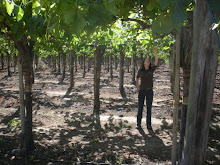This week, I have a guest blogger! My friend Dave was good enough to give a bit of insider info on the commercial fishing industry in Bristol Bay, AK.
Thanks Dave!
Welcome to your weekend! -KB
Winter has finally given way to a beautiful spring here in the Northwest. This spring, before we know it, will become summer, where the Alaskan fishing industry will quietly swing into full gear. 
When we bring salmon home from the store to enjoy a wonderful meal, we might not consider exactly how this particular salmon got to our dinner plate. Like all our foodstuffs, the salmon was once a living “breathing” organism. In the next few months we will track some of the various life-cycles of herring and salmon while also providing an insight into the fishing industry. The fishing industry most familiar to this author is commercial fishing district of Bristol Bay, Alaska. Bristol Bay is located roughly 300 miles west of Anchorage. Bristol Bay is home to five river districts that provide some of the largest and richest runs of sockeye salmon (also known as red salmon) in the world.
In order for this fishery to remain a viable and natural resource the Alaska Department of Fish and Game (ADF&G) controls these rivers to ensure that escapement numbers are reached. What are escapement numbers? Escapement numbers are the fish allowed to return to the spawning grounds to reproduce. For instance, in 2009, according to the ADF&G, the total salmon returning to Bristol Bay was 40.43 million fish, of which 9.53 million sockeye were allowed to escape. The ADF&G predicts a slightly smaller run this year of 39.77 million fish, where 8.01 million fish are allotted for escapement and 31.76 million fish are allotted for processing. These numbers, for this area of Alaska, are fairly typical over the recent years. Why are escapement numbers important? These fish that escape and reproduce provide this renewable and precious resource that allows us to enjoy a delicious source of protein while maintaining the delicate balance of the Alaskan eco-system.
At an average selling price of $0.70 per pound in 2009 (for sockeye), fishermen make some or all of their living in this relatively short six week season. Fishermen generally have a contract to fish for a certain processing company which buys their entire catch. From the moment of catch, to the processing facility, and beyond to your local seafood department, quality control remains paramount. Processors are charged with the responsibility of preparing the salmon safely for the specific market buying them. For instance, some processors focus on specialty markets such as smokehouses while others fill industrial sized orders. In later entries we shall discuss the specific processes that go into preparing an average salmon for the market.
Fishing in the Naknek River

Although the average salmon season lasts only six short weeks in Bristol Bay, there is no lack of preparation that goes into a typical salmon season. No matter whether one works on the fishing boats or on land in a processing facility the fishing industry is grueling work. While sockeye salmon may reign king in Bristol Bay during the months of June and July, Pink and Coho Salmon have later or more abundant runs in August and September in other parts of Alaska. Salmon is not the only marine fishing in Alaska. From Crab to Pollock Alaska provides an extraordinary amount of marine produce for the world to enjoy.
As Discovery’s Deadliest Catch has illustrated, fishing remains a dangerous job. However tough and dangerous work there is to be done, the American spirit remains well and alive to accomplish the task. If one is well motivated and resilient one can typically find decent employment in this industry.
On the other hand, sport fishing is also abundant and should be taken advantage of given the opportunity. The natural wonders of Alaska are awe inspiring with thousands of acres of national parks. Given the opportunity, Katmai National Park should not be overlooked. For as little as $200 (accessible by plane from King Salmon, AK) visitors can walk amongst the bears and visit Brooks Falls.
Bears dueling for Salmon – Katmai Nat. Park (Brooks Falls)

For further information:
Alaska Department of Fish and Game
Processing



Naknek looks like a great fishing destination! However, it is also the name of a fine beverage, Bound to lift spirits, and warm cold hands holding reels. Recipe follows.
ReplyDeleteGrandma's Naknek:
Ingredients:
One Fifth Whiskey
One Fifth Peppermint Schnapps
Directions:
Mix entirety of two bottles, return mix to original bottles
Yield:
2 bottles Naknek